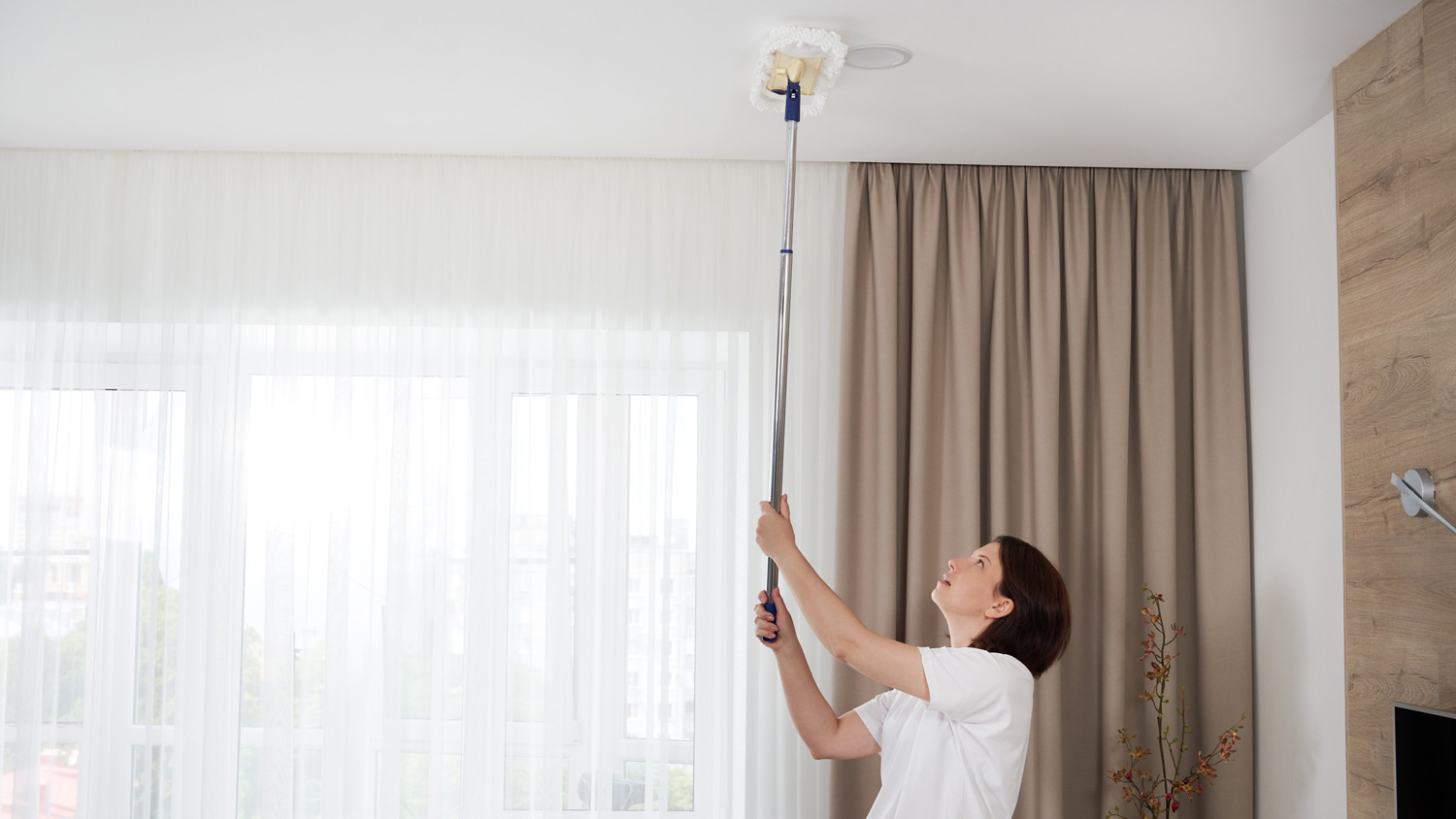
Discover the average acoustic ceiling cleaning cost, what affects pricing, and how to save. Get expert tips to budget for your acoustic ceiling cleaning project.
Warm water, a little soap, patience, and if you want to splurge—a couple of pro tools are all you need to clean latex paint from your brushes


After a long weekend of painting the walls the perfect shade of cerulean, you’re tired and probably not too interested in cleaning paintbrushes after the last touch-up. Resist the urge to drop and run; dried latex paint on your brushes adds extra time to the overall clean-up and could ruin your quality brushes.
The good news is that paintbrush cleaning is quick and simple. All you need is soap and water in a pinch, but these steps offer helpful advice to make the chore even easier.
You don’t want to deal with washing off more paint than you have to. Before you start running the hot water, scrape excess paint off the paintbrush by wiping the brush against the edge of the paint can. This step also prevents paint waste by allowing excess paint to drip back into the can that you can use later.

To start the cleaning process, give the brush a good rinse under running water to wash most of the paint down the drain. Make sure to run your hand along the bristles, spreading them out and working from the base of the brush to the end of the bristles. Don’t worry; most municipal water waste systems greenlight washing the latex paint but make sure your septic tank can handle the paint remains.
For particularly stubborn paint, you may want to soak the paintbrush in hot, soapy water for about 20 minutes before moving on to the next step.
If you’ve invested in high-quality brushes that you’d like to use over and over, it makes sense to also invest in a paintbrush comb (it looks like a wide-gapped flea comb for dogs). The comb takes cleaning to the next level because it catches paint in the center of the brush you might miss. Don’t sweat buying this inexpensive brush tool, which costs about $3 to $10; there are DIY project money-saving tips, like choosing a primer/paint combo.
To use the comb, start by dipping it in warm, soapy water. Then, just as you’d use a comb on your hair, run the comb tines through the paint brush bristles to loosen up paint bits stuck in the paintbrush’s center.
Next, fill your sink or bucket with warm water and about one teaspoon of mild liquid dish soap. Give the bristles another massage in the bucket of soapy water, spreading them out to remove any hidden paint bits. It’s best to complete this step before and after using the comb to remove all the paint. Then, give the brush a rinse under warm water. Depending on how much color is on the brush, you might have to rinse and repeat a few times until the rinse cycle runs clear.
Over an empty bucket, quickly tap or spin the brush, allowing excess water to fly off the bristles and onto the sides of the bucket. If you have a paintbrush spinner, you can attach this to the bucket and then attach the brush to the spinner. It will lower into the bucket and spin out the water from the brush—just like your favorite salad spinner. A paintbrush spinner costs about $10 to $30.
Pat your brushes dry with cleaning cloths or towels. If you have a paintbrush comb, use it to comb out the bristles, then use your fingers to reshape the paintbrush. Hang it up to dry on a hook or clothesline if you can. You can also lay it flat open or wrapped in newspaper to hold its shape. Then, let the paintbrush dry before putting it away.
When you reach for the paintbrushes later to paint the next perfect shade of blue, you’ll be glad you took the extra 10 minutes to clean up the right way.
Your sore muscles say it's time to take a break from painting the walls, ceiling, and trim. Don’t ditch the brush and grab a sandwich—you’ll pay for it with extra scrubbing later. Dried, crusty paint makes the paintbrush cleaning process longer and more tedious, so don’t let it air dry.
Follow these simple steps to practice good latex paintbrush hygiene.
Finish the paint load on the brush, then wipe the bristles against the rim of the paint can to allow excess to drip back into the can.
Tightly wrap bristles with cling wrap to keep the paint moist, but only for 24 hours at the most.
If you won’t pick up the brush again for more than a day, wash off the remaining paint with dish soap and warm water. Then use a brush conditioner to keep bristles soft and pliable.
From average costs to expert advice, get all the answers you need to get your job done.

Discover the average acoustic ceiling cleaning cost, what affects pricing, and how to save. Get expert tips to budget for your acoustic ceiling cleaning project.

Cleanout cost may be one of your first thoughts when left in charge of an estate. We walk through factors to expect, the professional estate cleanout services cost, and ways to save.

Hiring a house cleaner frees up your schedule and keeps your home spotless. The cost to hire a house cleaner depends on the size of your house, your schedule, and who you hire. Use this guide to understand typical house cleaning prices better.

A dirty house can increase your stress levels. This guide explains who to hire to deep clean your house and why hiring someone makes sense.

Need to bring in professional help to clean your home? Use this list of questions to ask a house cleaner to make sure you hire the best one for the job.

Keeping tile floors tidy is as easy as following a few simple tricks. Here’s how to keep your tile floors clean (and what to avoid).